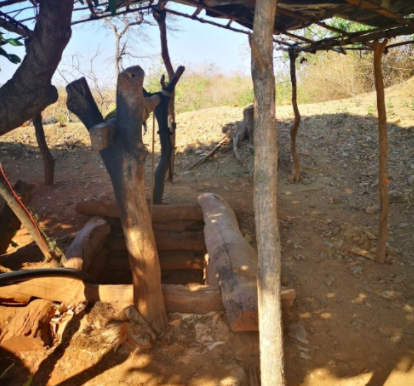
An example of artisanal & small-scale mine entrance
The Fourth Industrial Revolution represents a fundamental change in the way we live, work and relate to one another. It is a new chapter in human development, which is enabled by extraordinary technological advancement from what has been seen in the first, second and third industrial revolutions. By affecting the incentives, rules, and norms of economic life, it has transformed how we communicate, learn, entertain ourselves, and relate to one another and how we understand ourselves as human beings.
The result of all this is societal transformation at a global scale. With all the regulations related to social and physical distancing due to the COVID19 pandemic, there has been a highlight on the urgent need for technology to be everywhere and work for everyone.
How can technology improve Artisanal & Small-Scale Mining
With approximately 100 million artisanal miners globally, the introduction and use of technology has the potential to improve livelihoods dramatically. With artisanal mining contributing an average of 60% of many countries’ supply of precious minerals, great monitoring and management through digital solutions is imperative for better environmental and economic outcomes. There are many ways that technology can play a role in transforming the sector:
- Record Keeping: Record and trace miner work and output, along with helping the miners improve the way they work and improve their business acumen. This will aid with traceability and pave way for the contentious issues below as well.
- Formalisation: There have been many calls for formalisation of the Artisanal & Small-Scale Mining sector from different civil society organisations and NGOs. An average of 70 to 80 percent of small-scale miners are informal. Informality brings along damaging socioeconomic, health and environmental impacts, which trap the majority of miners and communities in cycles of poverty and exclude them from legal protection and support. The introduction of technology and digital solutions to artisanal and small scale miners can help decriminalise the sector which can lead to more transparency on how they work what they produce. This can be done through creating platforms that allow miner registration and productivity tracking. Having a streamlined licensing processes will also make it easy, cost-effective and rewarding to obtain a licence
- Capacity Building: Training, tracking and ‘certification’. Civil society and international organisations that would want to partner with the miners and provide training and pilot projects will get easy access to the database and information regarding potential stakeholders
- Access to Information: Information sharing platforms focussing on trading and market updates, improved and alternative methods of mining. Access to information and world trends can improve their bargaining power in trading and access markets.
- Access to Finance: Efficient mining requires long-term financing for initial exploration and then to assess feasibility of extraction as well as put safety measures, purchasing equipment, protective clothing and labour. However, without access to capital, access to these essentials has been a challenge for the ASM sector. Because of the non-mechanised and under- capitalised nature of ASM, there is often a poor recovery rate and returns are relatively low. With information on the miners details i.e, where they are located, their registration, productivity, the training and certification, financial services providers would have more confidence to provide loans and other services required by these miners, as they will be able to trace their history
- Advanced Equipment and Technology: Access to the latest equipment will help improve efficiency. Rapid advances in technological innovation, including through automation, digitization, and electrification, are having a fundamental impact on the mining sector. A few technologies reshaping the sector include autonomous vehicles, automated drilling and tunnel boring systems, drones and smart sensors. The World Economic Forum (WEF) estimates autonomous machines will be commonplace by 2025, and having these machines operating 24 hours a day, every day, at high levels of productivity and with lower personnel costs could add USD 56 billion in value to the industry.
There is a need, however, to ensure automation and artificial intelligence (AI) technologies do not undermine shared value efforts, such as employment and investment in local communities or dividing the sector into low-paying, low-skilled jobs and high-paying jobs for individuals who can take advantage of the shift to new technologies.
Ball crusher for crushing ore
>Read more about our work in Gold.
